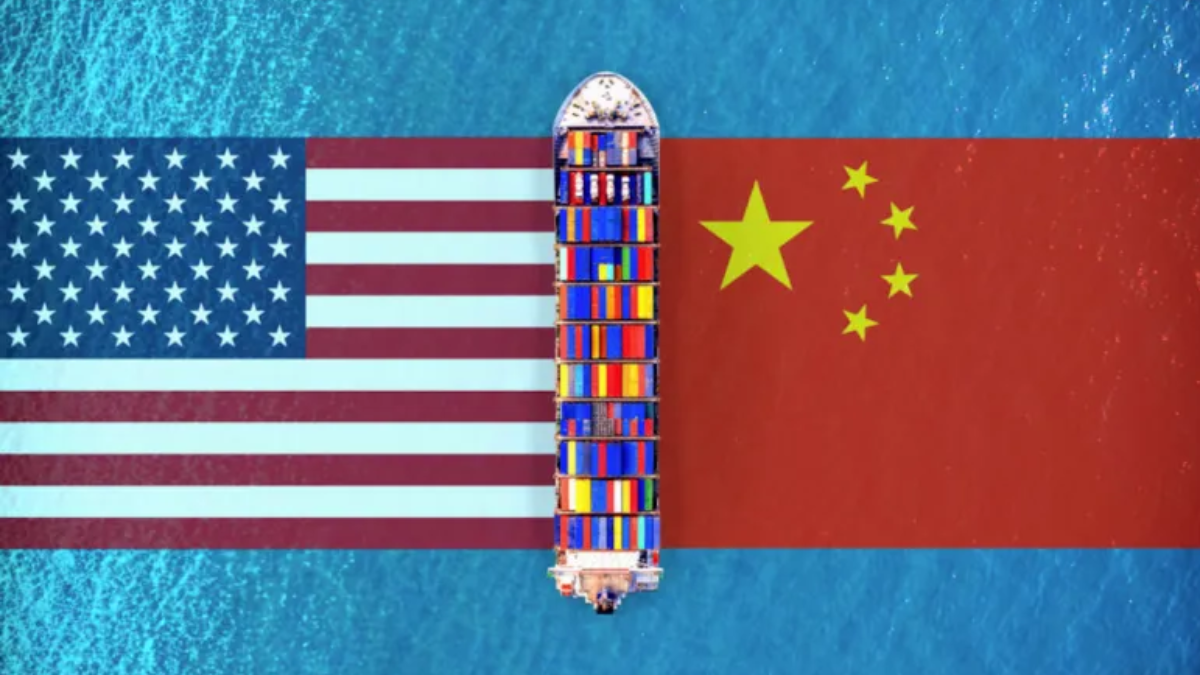
The Telegraph reports that former U.S. President Donald Trump is quietly expanding his trade war with China by focussing on important Asian countries with a flurry of new tariff threats and trade talks.
Trump’s Regional Strategy Aims to Isolate Beijing

Trump is attempting to put tariffs on friends like South Korea and Japan in spite of a recent agreement with China. He is also pursuing trade agreements with countries in Southeast Asia, including Indonesia, Thailand, Cambodia, and others. The bigger goal, according to The Telegraph, is to isolate China from vital export markets throughout Asia, a move that may seriously harm Beijing’s export-driven economic strategy.
The Telegraph quoted Neil Shearing, Chief Economist of Capital Economics, as saying: “What we are seeing is not a fleeting trade war. Instead, the two biggest economies in the world are engaged in a more profound and long-lasting superpower competition.
Markets Track Trump’s Trade Actions as the Tariff Deadline Draws Near
Setting the Stage: Deals with the UK and Vietnam

This larger regional offensive was made possible by Trump’s prior deals with Vietnam and the United Kingdom. While the Vietnam agreement targets “transshipments”—Chinese goods that are rerouted through Vietnam to avoid U.S. tariffs—the UK accord apparently permits Washington to prohibit Chinese investment in Britain.
Trump, for instance, doubled the 20% duty on goods made in Vietnam to 40% on same transhipped goods. The action makes it quite clear that while the United States will accept Vietnamese exports, it will not stand for Chinese items to be rebranded as Vietnamese in order to avoid paying tariffs.
Laura Loomer Suggests Conservatives May Join Elon Musk’s America Party to Undermine Trump
Rising Pressure on Other Asian Economies

Trump is now focussing on nations like Thailand, Cambodia, Indonesia, and Malaysia. The article claims that unless these countries reach advantageous trade agreements with the United States, he is threatening tariffs of up to 36%. By restricting U.S. market access for nations that provide as alternative export channels for China, the objective is to lessen China’s economic might in the area.
US Dollar Drops Sharply as Trump’s Economic Policies Take Effect
China’s Export Model at Risk

Vietnam’s expanding commercial ties with China made it a pivotal figure in Trump’s agenda. Chinese exports of electrical and mechanical products to Vietnam have increased from 17% to almost 50% of the nation’s total imports in that category since Trump first took office in 2017. Vietnam’s imports from China in these areas increased by over 25% after Trump returned to the White House this year, according to The Telegraph.
Since domestic consumption is still low, Beijing’s economic model mostly depends on exports to sustain yearly GDP growth of at least 5%. Although the government provides subsidies and manufacturing investment to encourage this expansion, China must turn outside its borders to sell its goods because household buying power is low.
According to David Lubin, a senior research fellow at Chatham House, “export growth accelerates whenever Chinese domestic spending growth sags.” The reason for this is that Chinese businesses sell their goods overseas as they are unable to do it domestically.
India Notifies WTO of Tariff Response to U.S. Auto Duties Affecting $2.8 Billion in Exports
The Risk of a Supply Glut

China’s export-focused strategy has caused industrial overcapacity and excess, which has forced businesses to engage in price trade wars. In the event that Trump’s Asia-focused policy is successful in restricting China’s export channels, the excess goods may oversupply local markets, worsening the economic instability of the nation.
